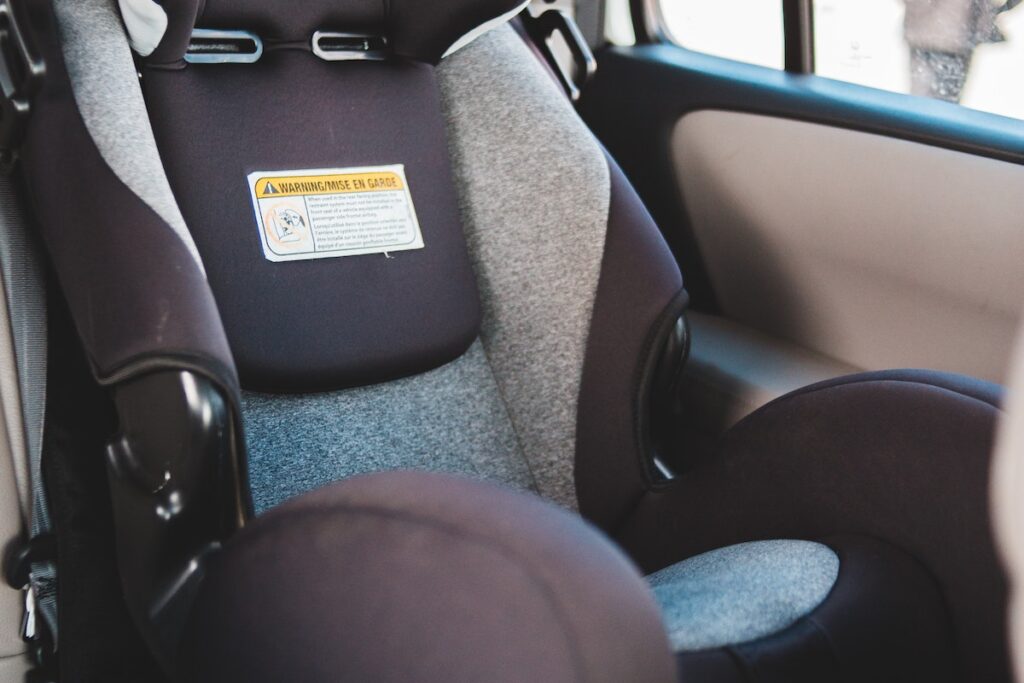Child safety is every parent’s top priority; this includes car seat safety. The Centers for Disease Control and Prevention (CDC) suggests that motor vehicle injuries are a leading cause of death among children in the United States. Using a car seat correctly can reduce the risk of death by up to 71% for infants and 54% for toddlers.
In this article, we’ll provide essential information about car seat safety to help you protect your child on the road. We’ve covered you, from age-appropriate car seats to proper installation and inspection.
So let’s dive in and learn how to keep your little one safe and secure in the car!
Car Seat Safety Guidelines
Age-Appropriate Car Seats
Selecting the right car seat for your child is critical to ensure their safety. The American Academy of Pediatrics (AAP) recommends the following car seat guidelines based on your child’s age:
Rear-Facing Car Seats
Infants should ride in rear-facing car seats until they grow to the highest weight or height the car seat’s manufacturer allows, usually around 40 pounds or two years of age. Rear-facing car seats offer the best protection for a baby’s head, neck, and spine in a crash.
Forward-Facing Car Seats
Once your child outgrows the rear-facing car seat, they should ride in a forward-facing car seat until they grow to the highest weight or height the car seat’s manufacturer allows. Most convertible car seats can accommodate children up to 65 pounds.
Booster Seat
Children who have outgrown a forward-facing car seat should use a booster seat until they are big enough to use a seat belt alone. This is usually when they are around 4 feet 9 inches tall and between 8 and 12 years of age. Booster seats help position the seat belt correctly on a child’s body to provide the best protection in a crash.
Weight-Appropriate Car Seats
In addition to age, it’s essential to consider your child’s weight when choosing a car seat. Car seats are designed to accommodate specific weight ranges to provide optimal protection. Check the car seat’s weight limit before purchasing it, and make sure your child is within the weight range before using it.
Height-Appropriate Car Seats
Like weight, height also plays a significant role in car seat safety. Ensure the car seat’s harness slots are at or above your child’s shoulders for rear-facing seats and at or below the shoulders for forward-facing seats. This ensures that the harness fits your child snugly and provides the best protection in a crash.
Car Seat Safety Tips

Proper Fit and Adjustment
Ensuring your child’s car seat is correctly fitted and adjusted is crucial to its effectiveness. Follow these tips to ensure a proper fit:
- Ensure the harness is snug and flat against your child’s chest, with no slack.
- Adjust the harness height to fit your child’s shoulders.
- The chest clip should be at the armpit level.
Car Seat Installation
Installing a car seat correctly is as important as choosing the right one. Here are some tips to help you install your car seat correctly:
LATCH System
The LATCH (Lower Anchors and Tethers for Children) system is a standard feature in most cars and car seats manufactured after 2002. It allows you to secure the car seat directly to the car’s frame using anchors and tethers. Follow the car seat and vehicle owner’s manuals to ensure correct installation.
Tethering
Tethering is a system that uses a strap attached to the top of the car seat and anchored to the car’s frame to limit the seat’s forward movement in the event of a crash. Always use the tether when using a forward-facing car seat.
Airbag Safety
Airbags are designed to protect adults in case of a crash but can be dangerous to children, especially those under 13. To ensure your child’s safety:
- Always place your child in the back seat, away from the airbag.
- And If you must place a child in the front seat, turn off the airbag or use a car seat that can be safely installed in the front seat.
Car Seat Inspection
Finally, inspecting your child’s car seat regularly is crucial to ensure it works correctly.
In the US, According to the National Highway Traffic Safety Administration (NHTSA), four out of five car seats are installed incorrectly, so take the time to double-check your car seat’s installation and seek help if you need clarification. You can find a certified car seat inspection station near you by visiting conducting a quick online search.
Car Seat Position
Which is the safest place for a child to sit in a car? Choosing the safest location for your child is just as important as choosing the right car seat. Here’s a rundown of the different sections and their safety level:
Back Seat
It is considered the safest place for your child to ride, especially if they are under 13. The AAP recommends that children under 13 should always ride in the back seat. This is because the back seat is farther away from the impact of a crash, reducing the risk of injury.
Front Seat
If you must place a child in the front seat, ensure they are adequately restrained in a car or booster seat. Additionally, turn off the airbag if your car seat is rear-facing, as airbags can be dangerous to infants and young children. However, remember that the front seat must still be safer than the back seat, even with a properly installed car seat.
Middle Seat
The middle seat can be a safe location for your child, especially if you have a larger car or SUV. However, this is only true if the middle seat has a three-point seatbelt and is equipped with LATCH anchors. Always check your car’s owner’s manual to determine the safest location for your car seat.
Third Row
If you have a larger car or SUV with a third row, check the car’s owner’s manual to ensure that your car seat can be safely installed in the third row. Some third rows may not have LATCH anchors, making installing a car seat safely tricky.
Remember that no matter where your child sits in the car, always ensure they are properly restrained in an appropriate car seat or booster seat.
Child-Proof Car Seat Buckle
Regarding car seat safety, it’s about more than just choosing the right seat and installing it correctly. Ensuring your child is properly secured in the seat is also essential. However, many parents struggle with a common problem: their child can easily undo the car seat buckle.
Consider investing in a child-proof car seat buckle to prevent this from happening. These buckles require more effort to undo, making it more difficult for your child to escape from their seat.
There are several types of child-proof buckles available on the market, including those that require a two-handed release or those that have a locking mechanism. Some car seat manufacturers also offer their child-proof buckles as an optional accessory.
In addition to using a child-proof buckle, teaching your child about car seat safety and staying securely buckled in their seat is essential.
Frequently Asked Questions

Can You Leave a Sleeping Child in a Car?
It can be tempting to leave a sleeping child in the car while quickly running into a store or your house, but this can be extremely dangerous. Here are a few reasons why:
- Heatstroke
Heatstroke is a leading cause of non-crash vehicle deaths for children under 14. In just 10 minutes, the temperature inside a car can rise by 20 degrees, and cracking a window does very little to help. Leaving a child in a car, even for a few minutes, can put them at risk of heatstroke and even death.
- Car Theft
Leaving a child in a car also puts them at risk of car theft. In addition to the risk of being kidnapped, children can accidentally put the car in gear or release the emergency brake, causing the vehicle to roll away.
- Strangulation
Finally, leaving a child in a car can also put them at risk of strangulation. Children can become entangled in seat belts or other car parts, leading to injury or death.
Always stock up for safety and have a car first aid kit.
Conclusion
In conclusion, car seat safety is one of the most critical responsibilities of any parent or caregiver. By following the guidelines for child passenger safety and selecting an appropriate car seat for your child’s age, weight, and height, you can help ensure that your child is protected in the event of a collision or other incident.
Always correctly install the car seat and secure your child, ensuring the harness straps are snug and the chest clip is positioned at armpit level. Regularly check your car seat for proper fit and adjustment, and have it inspected by a certified technician to ensure it meets safety standards.
And finally, never leave your child alone in the car, even for a few minutes. The risks of heatstroke, car theft, and strangulation are too significant. Always take your child with you, even if it means waking them up from a nap.













